Galaxies are a wonderful deep-sky object to observe through your telescope, but have you ever taken time to move away from the old favourites and observe some lesser-known ones?
While smaller telescopes and binoculars reveal most galaxies as faint smudges, part of the joy of observing galaxies is comprehending where that light passing through your telescope has come from.
Colossal structures filled with stars, cosmic dust and dark matter, galaxies lie millions - even billions - of lightyears away from Earth.
Think of that, the next time you are observing your favourite galaxies at the eyepiece.
For more galaxy observing advice, read our guide to the best galaxies to observe and how to observe our neighbouring galaxies.
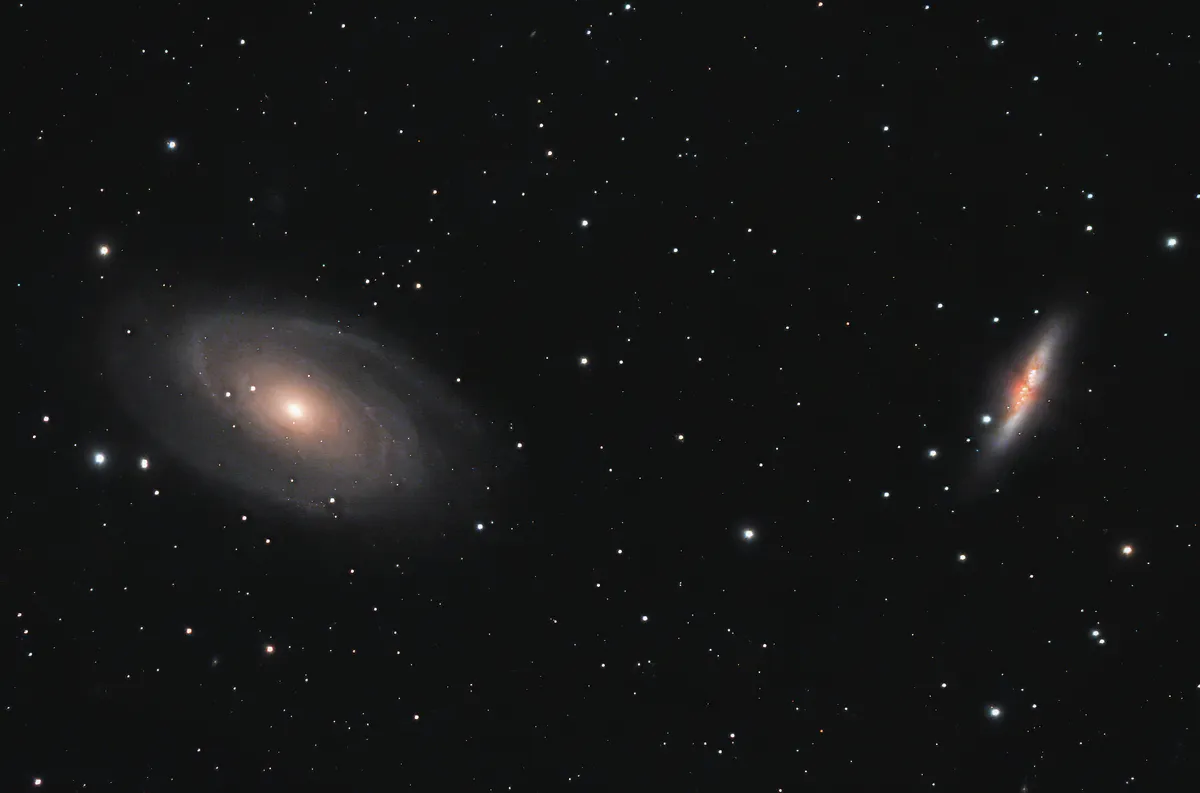
Most of us will have ticked off the most famous galaxies in the famous Messier Catalogue, including Bode's Galaxy and the Cigar Galaxy, the Andromeda Galaxy, the Whirlpool Galaxy and the Triangulum Galaxy, but what if you're seeking out galaxies that you've never seen before?
The jump to the galaxies of the NGC and Caldwell catalogues may seem a bit daunting.
But we can help. Below is a list of some lesser-known galaxies that you may not have pointed your telescope at before.
If you’re new to galaxy stalking, we suggest you start at number 1 and work your way up to the fainter examples.
Before you go outside, arm yourself with a detailed star chart or smartphone astronomy app to help you locate these galaxies (not forgetting to turn your smartphone screen red or use a red light light torch to preserve your dark-adapted vision.
Happy galaxy hunting!
10 lesser-known galaxies to see through a telescope
NGC 2903
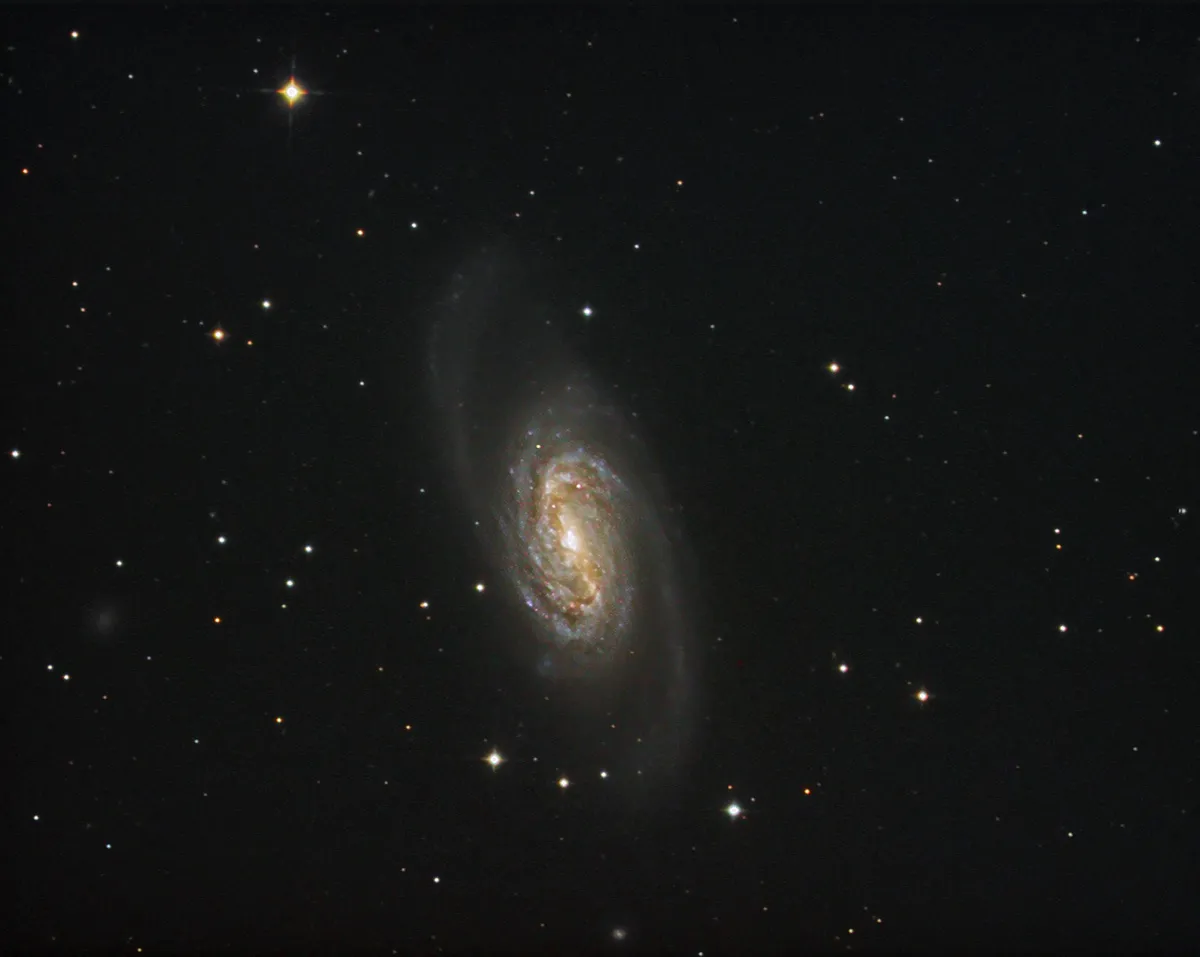
Coordinates:
- RA: 9h 32m 35s
- Dec: +21° 28’ 3”
This is a wonderful barred spiral galaxy, providing all that the budding observer could ask for: it’s bright, it’s detailed and it’s very easy to find.
To locate it, carefully centre the 4th magnitude star lambda (λ) Leonis in your widest-angle eyepiece and then move south by 1°.
You should now have a pair of 6th and 7th magnitude stars running east to west, slightly below the centre of the field of view.
About 20’ due south of the most easterly, and brighter of the two, is NGC 2903. Look for an elongated smudge of light.
It contains the light of a 9th magnitude star spread out over an ellipse, broadly 12’x6’ in size, but mainly concentrated in the centre.

Users of smaller telescopes may not pick up a lot more than the bright, elongated core of the galaxy.
This can also be glimpsed using binoculars of 50mm aperture or more, if you’re observing from a sufficiently dark site.
Telescopes with apertures greater than 200mm will, under good conditions, start to pick out some mottling, which arises in part from the ionised hydrogen gas regions associated with star formation.
One such region in the northeasterly arm of the galaxy was sufficiently bright that it received its own NGC number – 2905 – before it was realised how far out NGC 2903 extends.
In images there is evidence of a small bar in the structure that stands out from the dimmer arms, which you can glimpse with larger instruments visually.
Imagers will have a field day with NGC2903 because it’s so difficult to take a bad picture of it.
NGC 3115
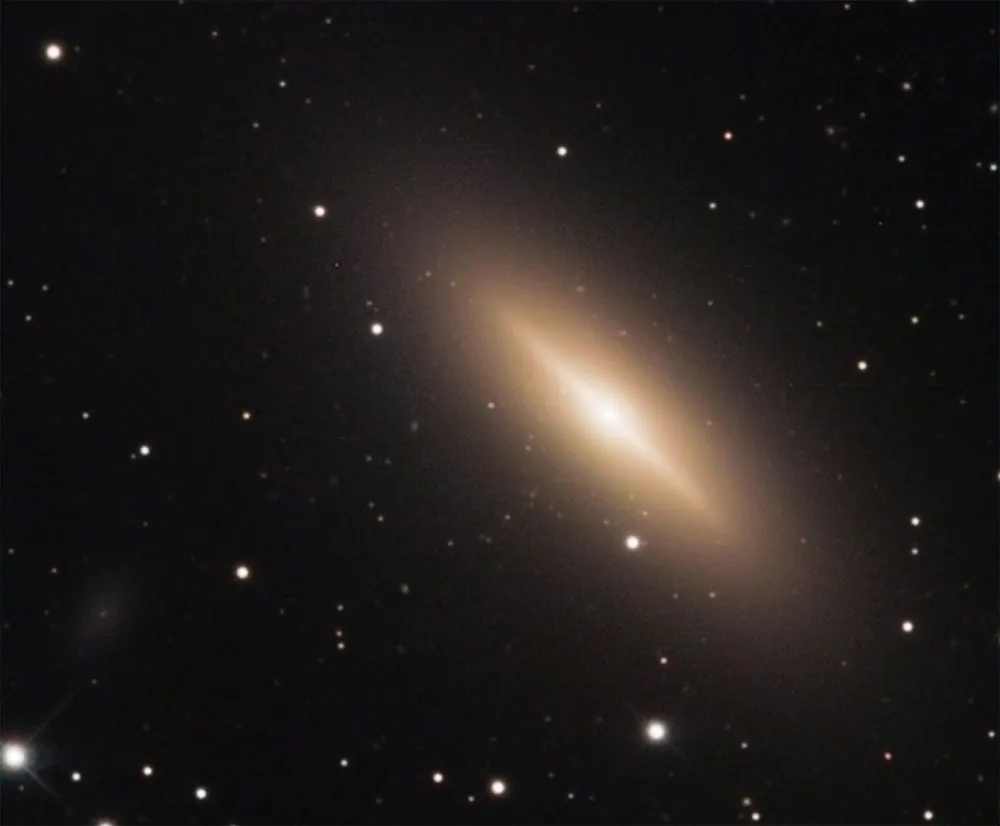
Coordinates:
- RA: 10h 5m 36s
- Dec: –7° 45’ 4”
Sextans is not a showy constellation, but it does boast NGC 3115, also known as the ‘Spindle Galaxy’.
It’s a lenticular spiral galaxy (type S0), which means it has no obvious spiral arms, and has a very regular distribution of stars.
Viewed edge-on, NGC 3115 has no dust lane and so could easily be confused with an elliptical galaxy.
To see it, find the 5th magnitude star gamma (γ) Sextantis. Then drop south by half a degree and move 4° east until you reach the pair of stars 17 and 18 Sextantis.
From there, go northwest to a pair of 6th and 7th magnitude stars, and the Spindle Galaxy is about two-thirds of a degree west again.

NGC3115 is a very fine example of a deep-sky object that you can show to non-astronomers without them saying, “What, that faint smudge?”
This is because it has quite a high surface brightness, packing the light of a mag. +8.9 star into a tight spindle shape roughly 7’x2’ in size.
It’s not ideally placed from the northern hemisphere, but look out for a bright, elongated core that can be readily seen in a 100mm reflector, with larger apertures showing the long thin plane of the galaxy. Another bonus is that it bears magnification well.
3C273

Coordinates:
- RA: 12h 29m 28s
- Dec: +2° 0’ 37”
Perhaps it’s slightly misleading to describe 3C273 as a galaxy. It’s the brightest quasar in the night sky and looks just like a dim star.
However, the star-like point you see arises from the enormous energies generated by the black hole that lurks at the core of its host galaxy billions of lightyears away.
3C273’s host galaxy itself is too dim to see, and yet its core is visible because of the huge amounts of matter that are accumulating in a spiralling accretion disk around the black hole.
The debris accumulates in the disc due to gravitational forces, with visible light, ultraviolet, X-rays and gamma-rays generated as some of the material makes the final plunge.

The quasar varies in brightness depending upon the amount of activity in the accretion disk, but at a typical magnitude of +12.5, with any light pollution at all it can prove a challenge.
Yet it is worth the effort, as it represents the furthest most people will ever see with a telescope.
The light from 3C273 started on its journey two billion years ago, so the least we can do is to get out a telescope and look at it!
You can find it using 79 Virginis as a starting point, taking in the galaxy NGC4536 along the way.
NGC 4565
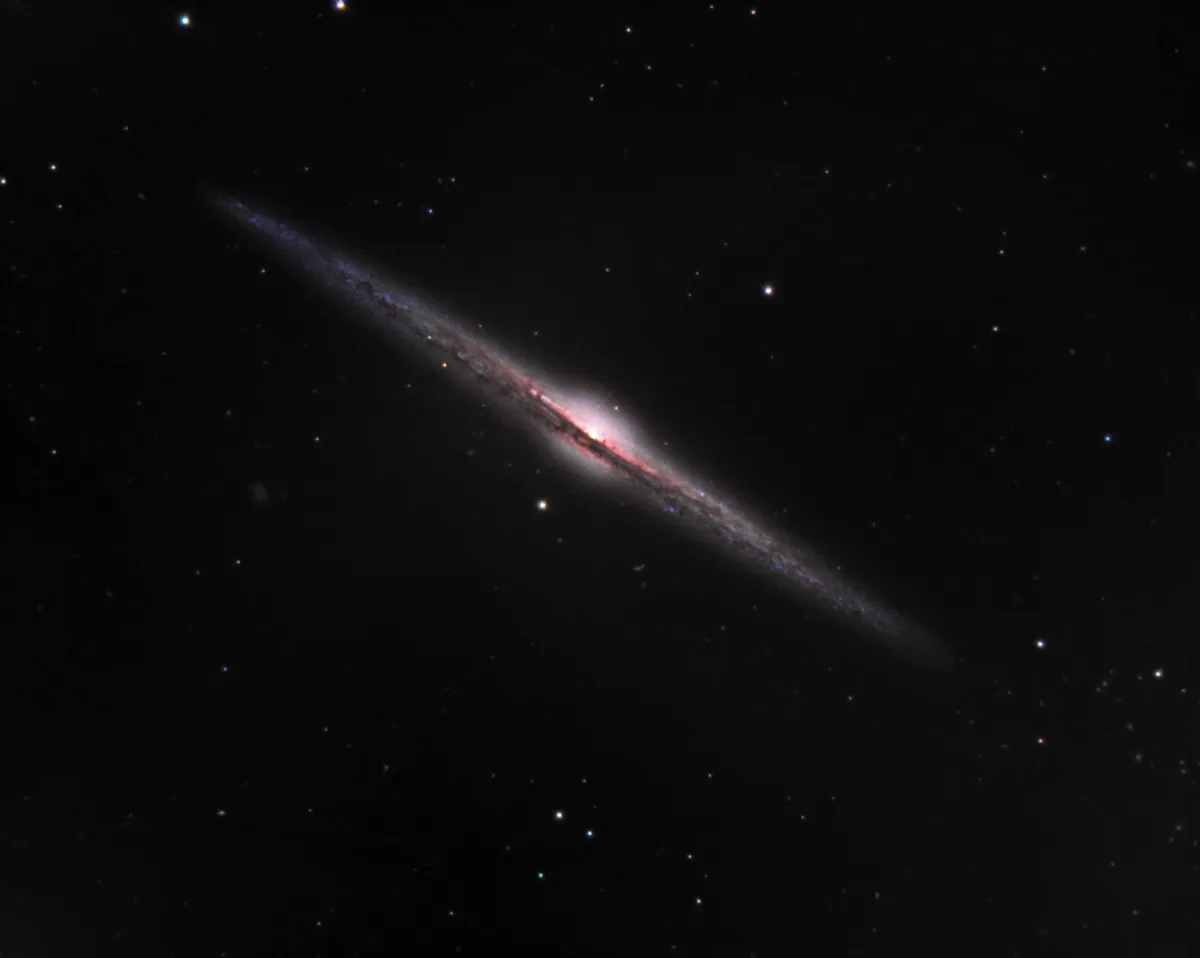
Coordinates:
- RA: 12h 36m 42s
- Dec: +25° 56’ 45”
NGC 4565, also known as the Needle Galaxy, is one of the best-known non-Messier galaxies in the sky.
Like NGC 3115, it’s an edge-on spiral galaxy, but has a pronounced dark lane along its axis.
The dark lane is caused by dust found between the stars in the plane of the galaxy, which obscures their light.
The central bulge of this galaxy is also well defined and the star close to it renders it unmistakable in images.
It’s also pretty large (15’x2’ when imaged, but less visually) and at mag. +9.5 is, in deep-sky terms, a bright one.

The field of stars within which it lies is rather sparse. This is a shame, especially given its location on the edge of the Coma Berenices star cluster Melotte 111.
This galaxy is located very close to the north Galactic pole and you can track it down without too much bother.
Centre the mag. +4 star gamma (γ) Comae Berenices in your sight and sweep east 2° – by chance NGC 4559 will enter into your field of view.
Now go 2° south and you’ll find NGC 4565.
It’s interesting to compare these two galaxies as they have roughly the same magnitude, but different shapes, with NGC4565 being longer and thinner.
Both will be faintly visible in 100mm telescopes and should display hints of detail at 200mm aperture.
NGC 4494

Coordinates
- RA: 12h 31m 46s
- Dec: +25° 43’ 58”
Elliptical galaxies are quite numerous and are often (happily) surprisingly easy to spot due to a decent surface brightness.
This one is just over 1.25° west of NGC 4565, which you may have seen already.
Alternatively, take a route via gamma (γ) 15, 14 and 16 Comae Berenices and look for a very slightly elongated haze around 1’–2’ across, close to a mag. +7.9 star.
It will not be detailed, but may be seen, in averted vision, to have quite a pronounced core.
At a good observing site it may be glimpsed with a 150mm aperture scope, but in exceptional locations, a 90–100mm (3.5 inch) aperture may suffice.

It’s obvious that images of elliptical galaxies lack the drama of their gaudy spiral counterparts.
But while some H-II regions can be reasonably accessible in scopes of 200–250mm aperture, the arms of most spiral galaxies remain notoriously elusive.
Unless you’re brandishing a light bucket in the 300mm (12 inch) or larger aperture range, you’ll probably find them very difficult to see indeed.
So, elliptical galaxies (and globular clusters) can be encouragingly accessible finds on nights when all the other deep-sky ‘faint and fuzzies’ seem to be eluding you.
NGC 2841
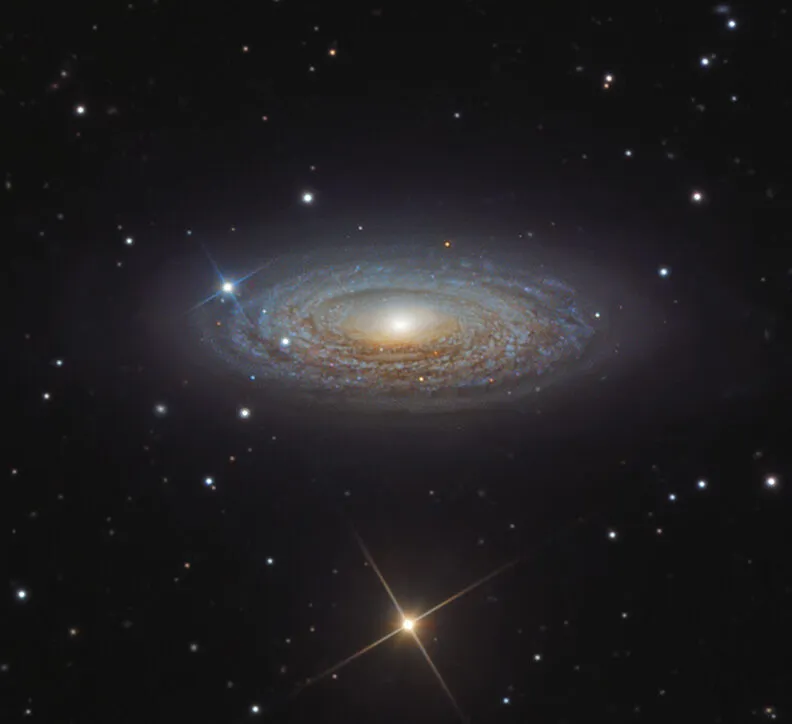
Coordinates:
- RA: 9h 22m 34s
- Dec: +50° 56’ 39”
NGC 2841 is one of the prototype flocculent spiral galaxies. This is the type of spiral galaxy that, at visual wavelengths, shows very little evidence of spiral structure.
Fortunately, NGC 2841 is quite easy to find as it’s a straightforward hop away from the star theta (θ) Ursae Majoris.
Move around two thirds of a degree north of theta and then sweep eastward 2°.
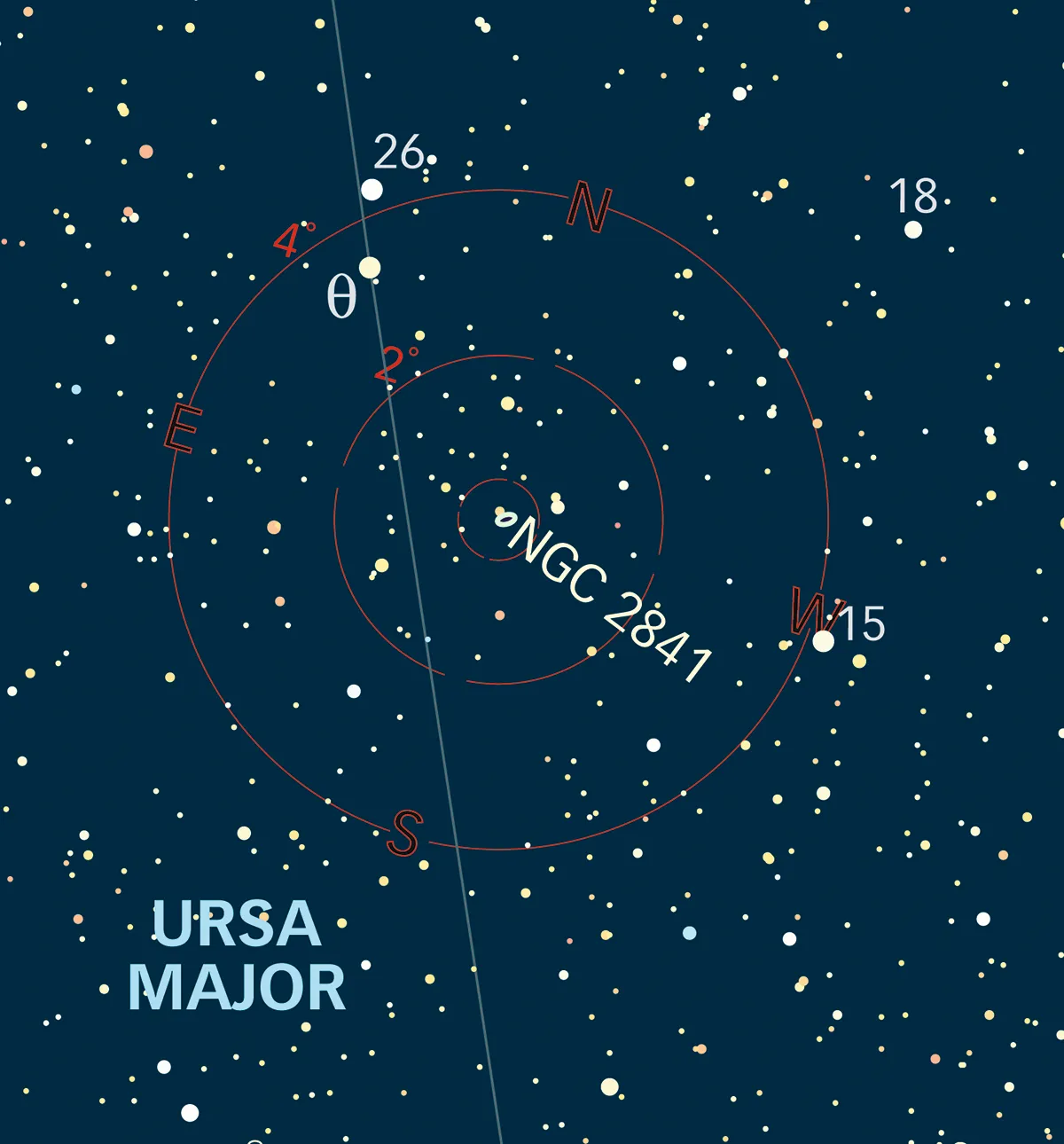
The galaxy will be to the south of the second 6th magnitude star you encounter on the sweep and will also have an 11th magnitude star very close to its northern edge.
The galaxy is mag. +9 and extends broadly north to south over 7’x3’.
Visual observers will find it attractively symmetrical, but it is quite featureless, so is not an ideal target for imagers.
NGC 4725
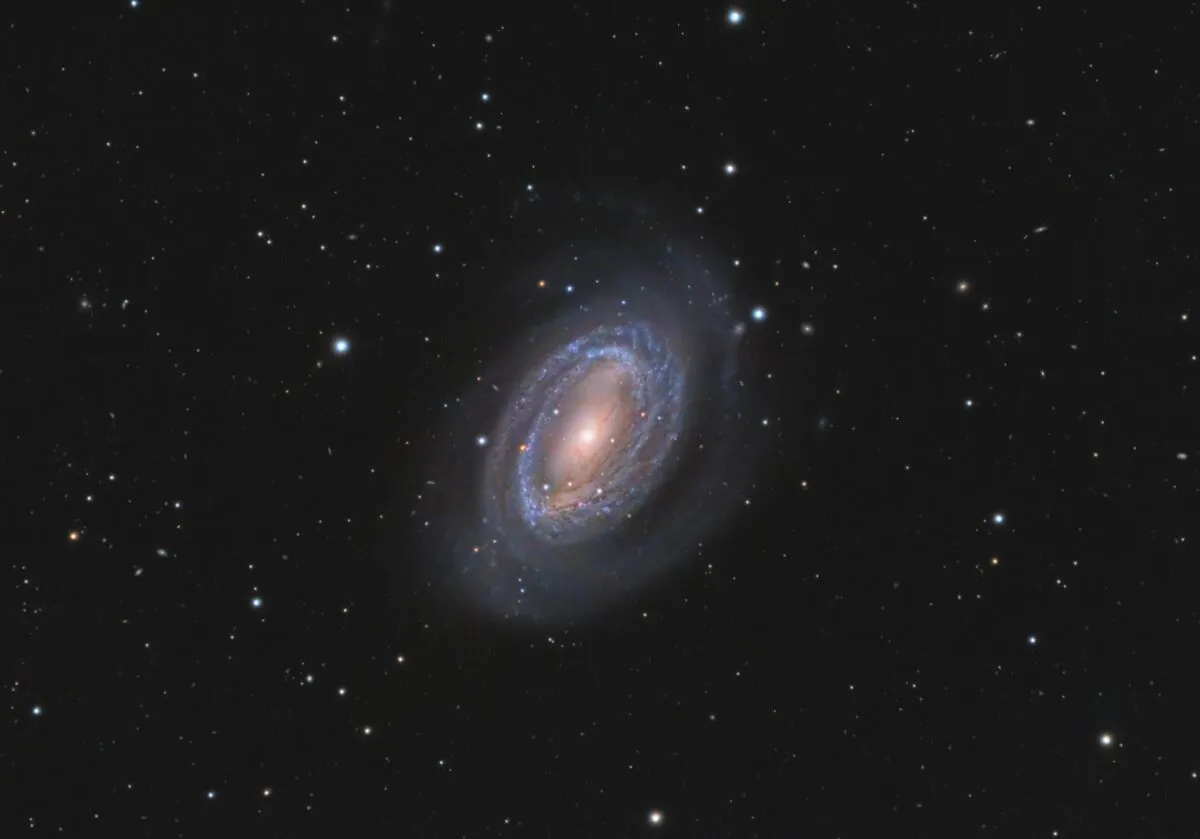
Coordinates:
- RA 12h 50m 48s
- Dec: +25° 27’ 29”
This is an unusual galaxy: a barred spiral that also sports a ring. However, it’s not especially difficult to find.
Just look southwest of the mag. +4.9 star 31 Comae Berenices and to the west of a small clump of 9th magnitude stars.
All you’re likely to see is the brightish nucleus of this mag. +9 galaxy surrounded by a dim and diffuse glow.

It’s a lovely sight to image, but may be problematic to see with smaller telescopes.
It’s believed that NGC 4725 and the nearby 12th magnitude galaxy NGC 4747 have at some point interacted, possibly colliding with each other.
This has allowed the long, spiral ring structure to form.
NGC 3184

Coordinates:
- RA: 10h 18m 44s
- Dec: +41° 23’ 7”
This face-on spiral galaxy has a great virtue: it’s a cinch to find.
Its position means that even if you’re uncertain whether you can see it, you’re at least certain you’re looking in the right place.
First, find the 3rd magnitude star mu (µ) Ursae Majoris and move westward a fraction under 1°.
To the east of a faintly red mag. +6 star you’ll find a dim patch of mag. +9.8 that’s more than 3’ wide.
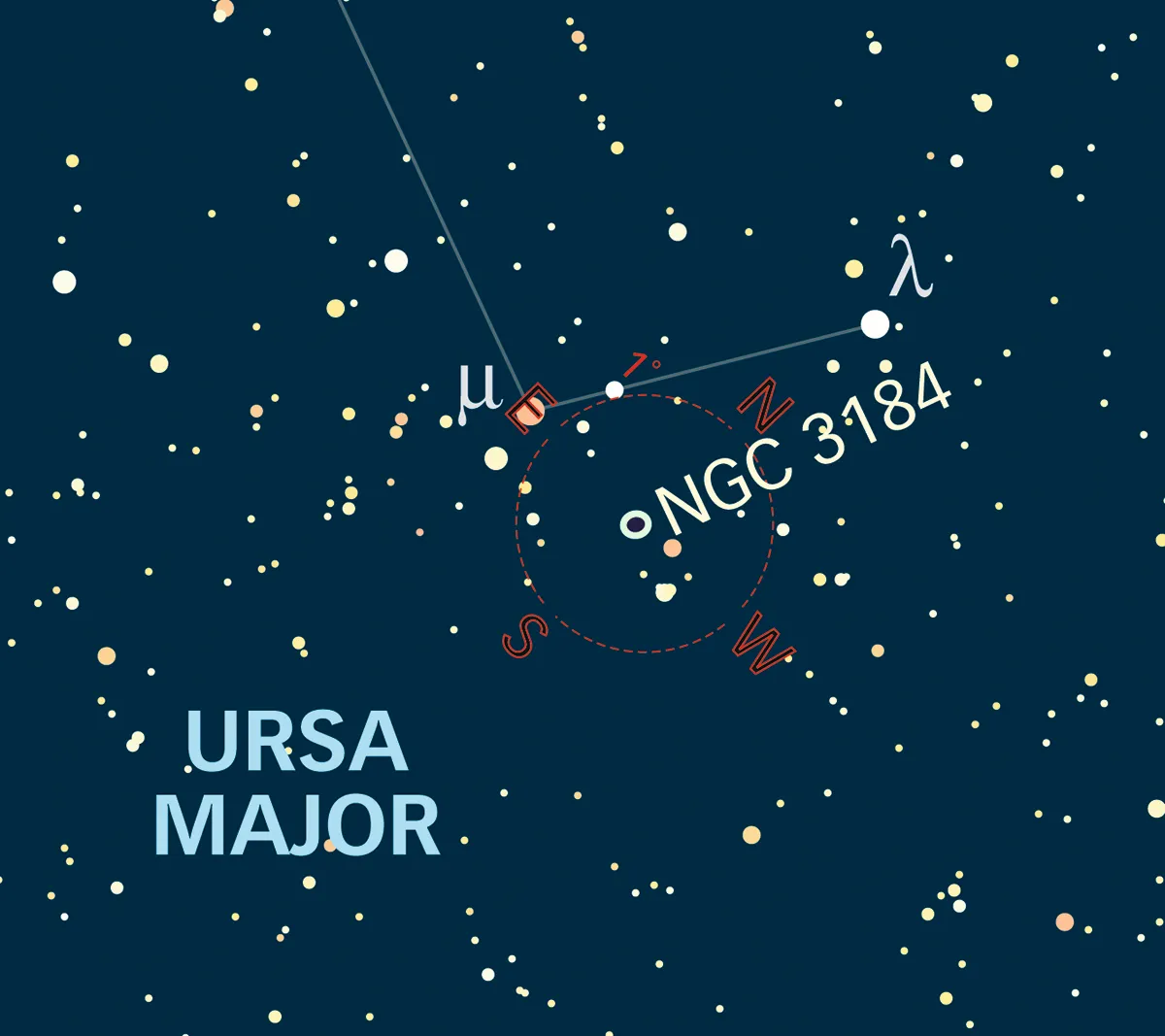
There will be a hint of a nucleus visible in moderate scopes.
More obvious in small scopes may be the mag. +11.5 foreground star that lines up nicely with the galaxy.
This is a beautiful galaxy to image, with pronounced regions of H-II gas, two of which have their own NGC numbers.
We recommend a scope with an aperture of 150mm (6 inches) or larger to see this one in all its glory.
NGC 5907

Coordinates:
- RA: 15h 16m 04s
- Dec: +56° 17’ 51”
The ‘Splinter Galaxy’ is a fine prize
This fine, edge-on spiral galaxy is very thin and long (12’x1.4’), so rivallingthe dimensions of NGC 4565 (galaxy number 4).
It is known as the ‘Splinter Galaxy’ and remains unsung because it is fainter than NGC 4565 at mag. +11.4.
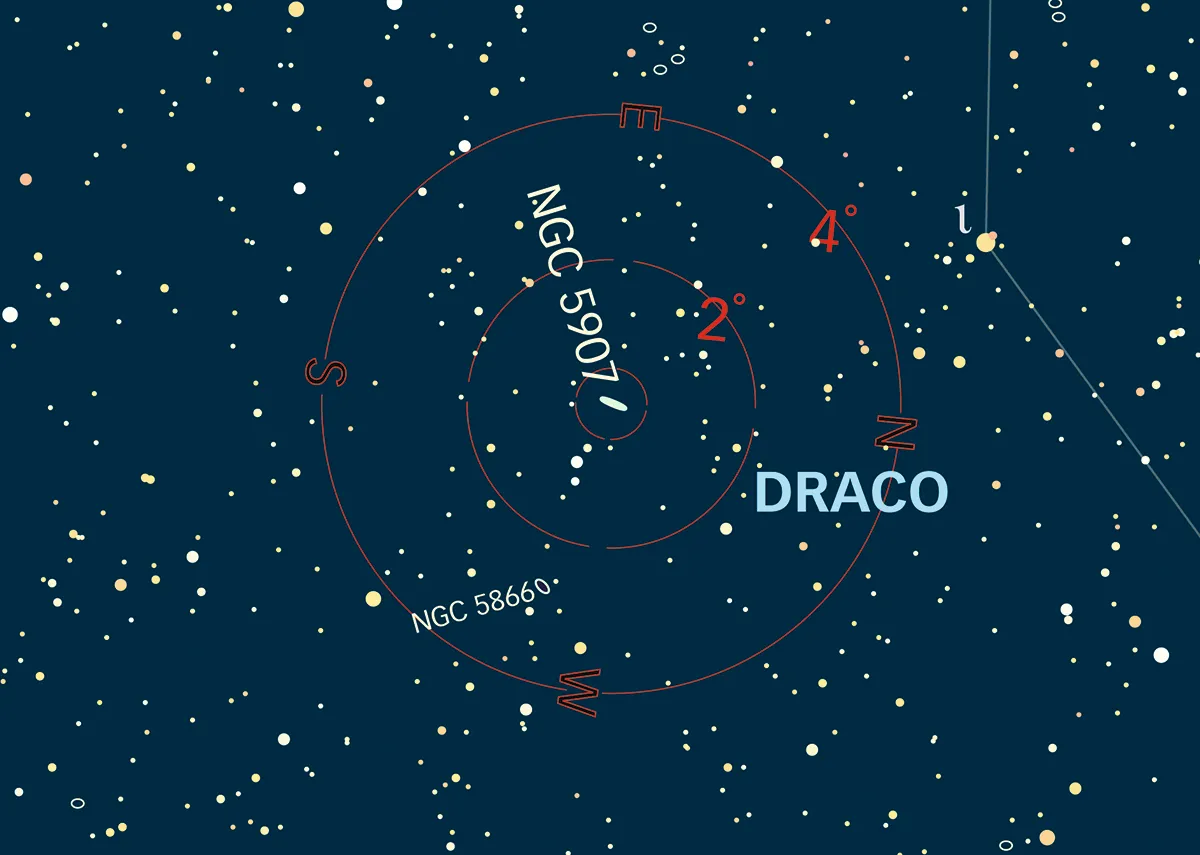
It’s difficult to see through a 200mm telescope and the nearest bright star is the 3rd magnitude iota (ι) Draconis.
It’s not especially easy to star hop to the galaxy, so you’ll need to be persistent and patient.
NGC 4567 and 4568

Coordinates:
- RA: 12h 36m 54s
- Dec: +11° 13’ 0”
These galaxies overlap each other and, visually, appear similar through larger telescopes.
They’re a pair of galaxies that are tilted so we see them obliquely. They are, however, also tilted with respect to each other so that they form a ‘V’ shape pointing to the east.
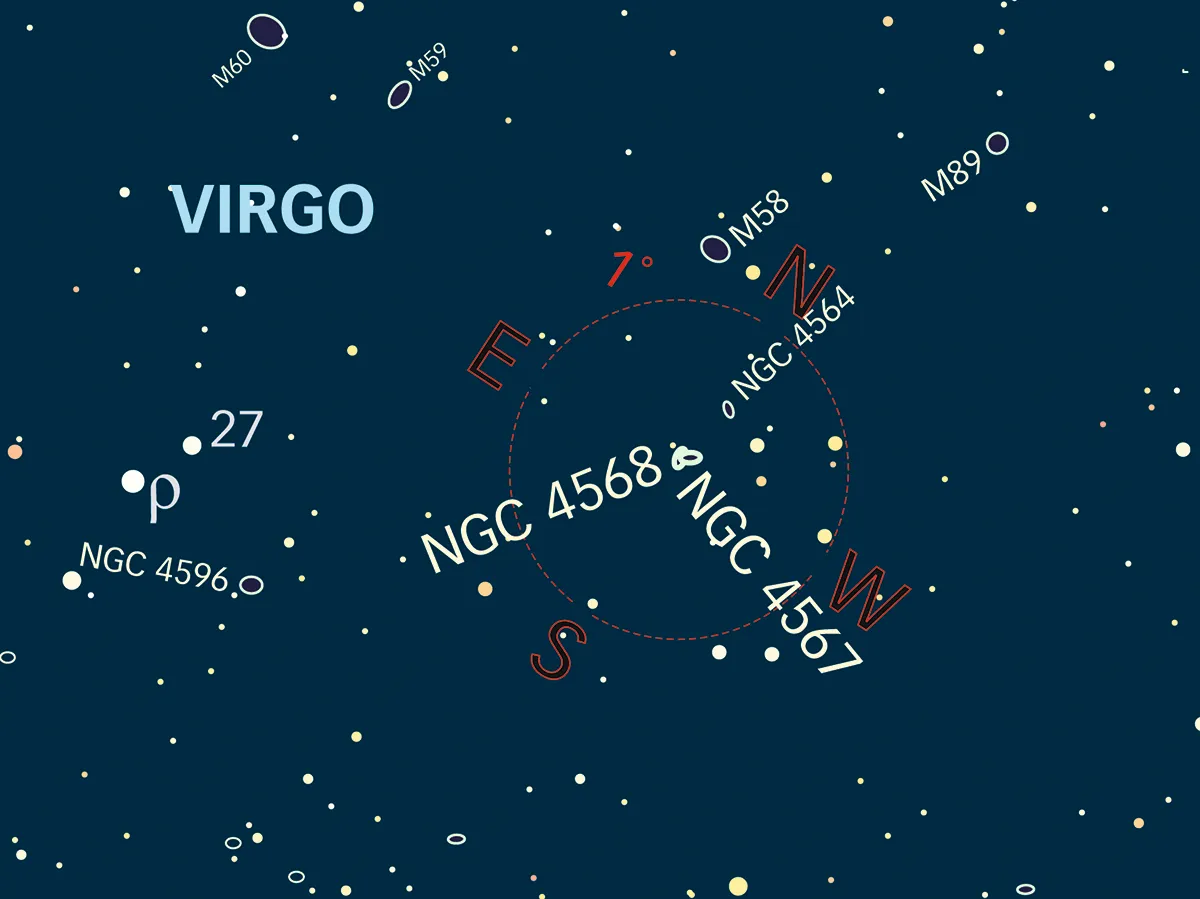
The more northerly, NGC 4568, is dimmer at mag. +11.3, while NGC 4567 appears slightly brighter at mag. +10.9.
They may prove too difficult for smaller telescopes of less than 200mm (8 inch) aperture, but have a go and look for them less than 1° southwest of M58 in the constellation of Virgo.
What are your favourite lesser-known galaxies? Let us know by emailing contactus@skyatnightmagazine.com.
This guide originally appeared in the March 2007 issue of BBC Sky at Night Magazine.
